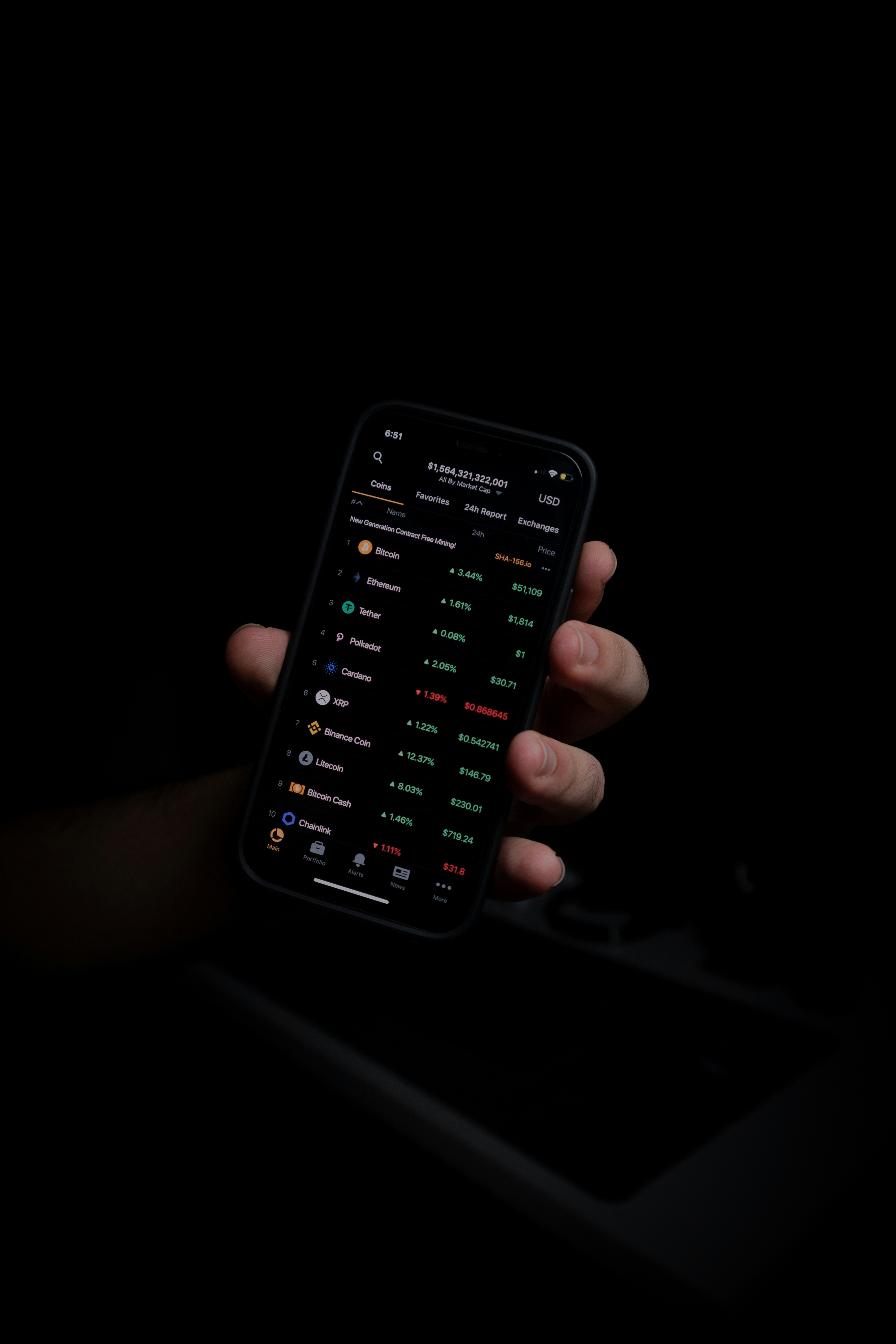Have you ever wondered how to optimize your iOS app for better performance? Look no further! In this article, we will explore some essential tips and techniques to help you boost your iOS app’s performance. From optimizing code and reducing memory usage to improving app launch time, we’ve got you covered. So, let’s delve into the world of iOS app optimization and unlock the full potential of your app.
App Performance Optimization
Welcome to this comprehensive guide on app performance optimization! In a world where users have increasingly high expectations for app performance, ensuring that your app runs smoothly and efficiently is crucial. In this article, we will discuss the importance of app performance optimization and provide practical tips on how to achieve it.
This image is property of images.unsplash.com.
Understand the Importance of App Performance Optimization
App performance optimization plays a vital role in enhancing the overall user experience. Imagine using an app that takes forever to load, has frequent crashes, or drains your device’s battery quickly. Such issues can frustrate users and lead to negative reviews or ultimately, uninstallation.
By optimizing your app’s performance, you can address these pain points and create a seamless experience for your users. A well-optimized app not only improves user satisfaction but also increases user retention, ultimately leading to higher app store rankings.
Set Clear Performance Goals
Before diving into the optimization process, it is essential to set clear performance goals for your app. These goals will guide you throughout the optimization process and help you measure your app’s performance against benchmarks.
To set performance goals, it is crucial to identify key performance indicators (KPIs) that align with your app’s purpose and user expectations. For example, if you have a social media app, important KPIs might include app launch time, response time when loading posts, or smooth scrolling.
Once you have identified your KPIs, establish benchmarks to measure your app’s performance against. This will help you track progress and determine whether your optimization efforts are effective.
This image is property of images.unsplash.com.
Monitor App Performance Metrics
Continuous monitoring of your app’s performance metrics is essential to identify areas that need improvement and measure the impact of optimization efforts. Utilizing analytics tools specifically designed for performance tracking can provide valuable insights into your app’s performance.
When monitoring app performance metrics, it is important to focus on key indicators such as app launch time, memory usage, CPU usage, battery consumption, network performance, and graphics/UI performance. By tracking these metrics, you can identify performance bottlenecks and prioritize optimization tasks accordingly.
Optimize App Launch Time
One crucial factor in app performance is the launch time. Users expect apps to load quickly, and a lengthy launch time can lead to frustration and a poor user experience. To optimize app launch time, consider the following techniques:
- Reduce App Startup Time: Streamline your app’s startup process by minimizing unnecessary tasks or delays that occur during initialization.
- Optimize App Initialization: Identify and optimize any slow or inefficient code that runs during app initialization.
- Leverage Background Loading Techniques: Utilize techniques such as lazy loading or asynchronous loading for resources that can be loaded after the app has launched.
By implementing these techniques, you can significantly improve your app’s launch time and provide a seamless user experience from the moment the app is opened.
This image is property of images.unsplash.com.
Optimize App Memory Usage
Managing app memory usage is crucial for maintaining a smooth and responsive user experience. Excessive memory consumption can lead to performance issues such as slow response times, crashes, or even app termination. To optimize app memory usage, consider the following approaches:
- Identify and Reduce Memory Leaks: Detect and fix memory leaks by using memory profiling tools. Memory leaks can occur when objects are not properly deallocated, leading to unnecessary memory consumption.
- Implement Efficient Memory Management Techniques: Use techniques such as object pooling or smart caching to optimize memory usage and reduce memory fragmentation.
- Use Appropriate Data Structures: Choose data structures that are optimized for memory usage and access patterns. For example, using a sparse array instead of a dense array can save memory when dealing with large datasets.
- Manage Images and Caches: Efficiently handle image loading and caching to avoid excessive memory usage. Consider using image compression techniques and clearing caches when they are no longer needed.
By effectively optimizing app memory usage, you can ensure that your app runs smoothly even on devices with limited memory resources.
Minimize App Size
In today’s app ecosystem, where storage space is limited on mobile devices, it is crucial to minimize your app’s size. An overly large app can deter users from downloading or keeping it installed. To minimize app size, consider the following strategies:
- Remove Unused Code and Resources: Periodically review your app’s codebase and assets to identify and remove any unused or redundant components.
- Compress and Optimize App Assets: Utilize compression algorithms and optimization techniques to reduce the size of your app’s assets such as images, videos, or audio files.
- Implement Dynamic Resource Loading: Load resources dynamically when they are needed instead of bundling them with the initial app installation. This can help reduce the initial download size and improve app launch time.
By minimizing app size, you not only improve user experience but also increase the chances of users downloading and retaining your app.
Optimize CPU Usage
CPU usage optimization is crucial for enhancing app performance and minimizing battery consumption. Excessive CPU usage can lead to slow responsiveness, increased battery drain, and even device overheating. To optimize CPU usage, consider the following strategies:
- Analyze and Optimize CPU Intensive Tasks: Identify any CPU-intensive tasks in your app and optimize them to minimize their impact on overall performance.
- Optimize Algorithms and Data Processing: Review your app’s algorithms and data processing logic to identify areas for optimization. Consider using more efficient algorithms or optimizing loops and data structures.
- Minimize Blocking and Synchronous Operations: Avoid blocking operations that can freeze the user interface or cause app slowdowns. Whenever possible, use asynchronous operations to offload heavy tasks from the main thread.
By implementing these CPU usage optimization techniques, you can ensure that your app runs smoothly and efficiently while minimizing battery consumption.
Optimize Battery Consumption
Battery usage optimization is an important aspect of app performance, especially for mobile devices that rely on limited battery power. Users expect apps to be efficient and not excessively drain their device’s battery. To optimize battery consumption, consider the following strategies:
- Reduce Background Process Usage: Minimize unnecessary background processes that consume CPU cycles and drain the battery. Use background execution only when necessary, and ensure that background tasks are efficiently managed.
- Minimize Network Requests: Excessive network requests can lead to increased battery consumption. Optimize network usage by reducing unnecessary requests, implementing caching mechanisms, or using more efficient data transfer formats like JSON instead of XML.
- Optimize Wake Locks and Notifications: Avoid keeping the device awake or showing constant notifications unless it is absolutely necessary. Minimize usage of wake locks and utilize push notifications instead of constantly polling for updates.
By optimizing battery consumption, you can help users conserve their device’s battery life and enhance their overall satisfaction with your app.
Improve Network Performance
Network performance optimization is crucial for apps that rely on internet connectivity to function properly. Slow network performance can lead to frustratingly long loading times, unresponsive interfaces, or data synchronization issues. To improve network performance, consider the following strategies:
- Optimize Network Request Size: Minimize the size of network requests by compressing data or using more efficient data transfer formats. This can reduce the time required for data transfer, especially in areas with limited network bandwidth.
- Implement Caching Strategies: Utilize caching techniques to store and retrieve frequently requested data locally, reducing the need for network requests.
- Use Background Processing and Asynchronous Operations: Offload network requests and data processing tasks to background threads or queues to prevent blocking the main thread and provide a smooth user experience.
By optimizing network performance, you can ensure that your app functions reliably even in challenging network environments, improving user satisfaction.
Optimize Graphics and UI Performance
Graphics and UI performance optimization are essential for creating a visually appealing and responsive app. Slow rendering times, laggy animations, or unresponsive user interfaces can deter users from engaging with your app. To optimize graphics and UI performance, consider the following strategies:
- Use Efficient Rendering Techniques: Utilize hardware acceleration and rendering techniques, such as GPU rendering or offloading computations to dedicated graphic processors, to maximize rendering performance.
- Minimize UI Element Animations: Limit the number and complexity of UI element animations to prevent excessive CPU and GPU usage. Use subtle animations that enhance the user experience without sacrificing performance.
- Implement Lazy Loading for Images: Load images lazily to avoid unnecessary memory usage and reduce the initial loading time of your app.
By optimizing graphics and UI performance, you can create an engaging and immersive app experience while ensuring a smooth and responsive user interface.
In conclusion, app performance optimization is crucial for enhancing user experience, increasing user retention, and improving app store rankings. By understanding the importance of optimization, setting clear performance goals, monitoring app performance metrics, and implementing optimization techniques for various aspects of your app, you can create a high-performing app that delights users and keeps them coming back for more. So, get started on optimizing your app today and provide your users with a seamless and enjoyable experience!



